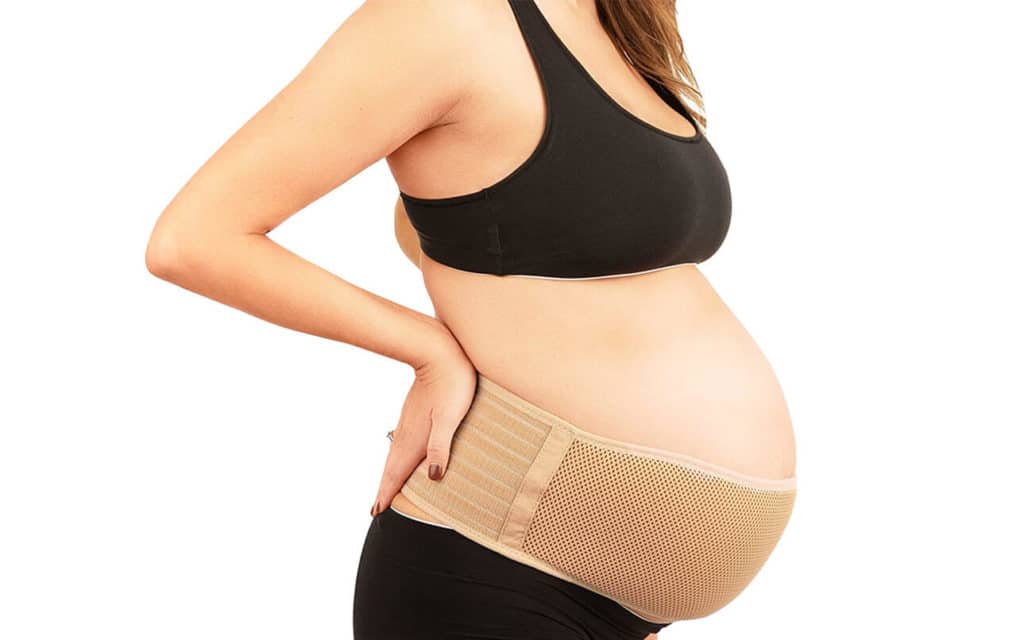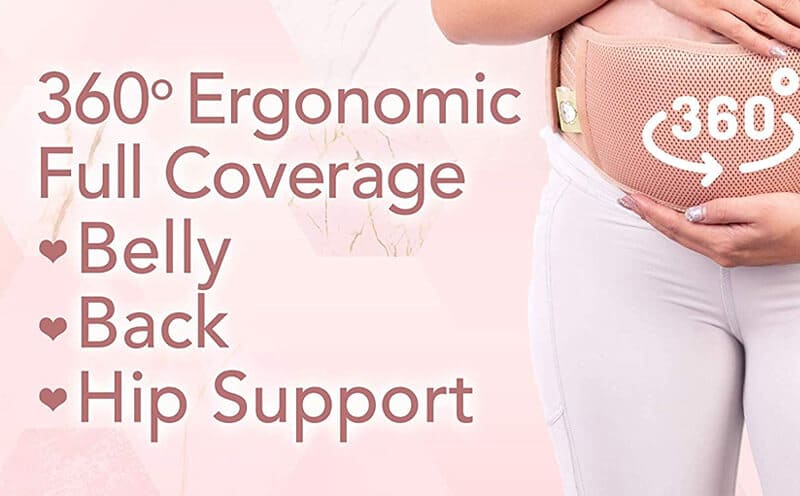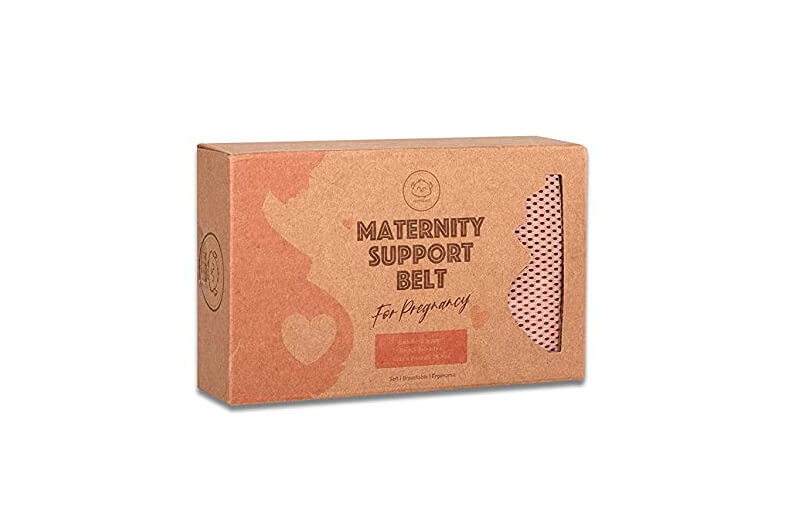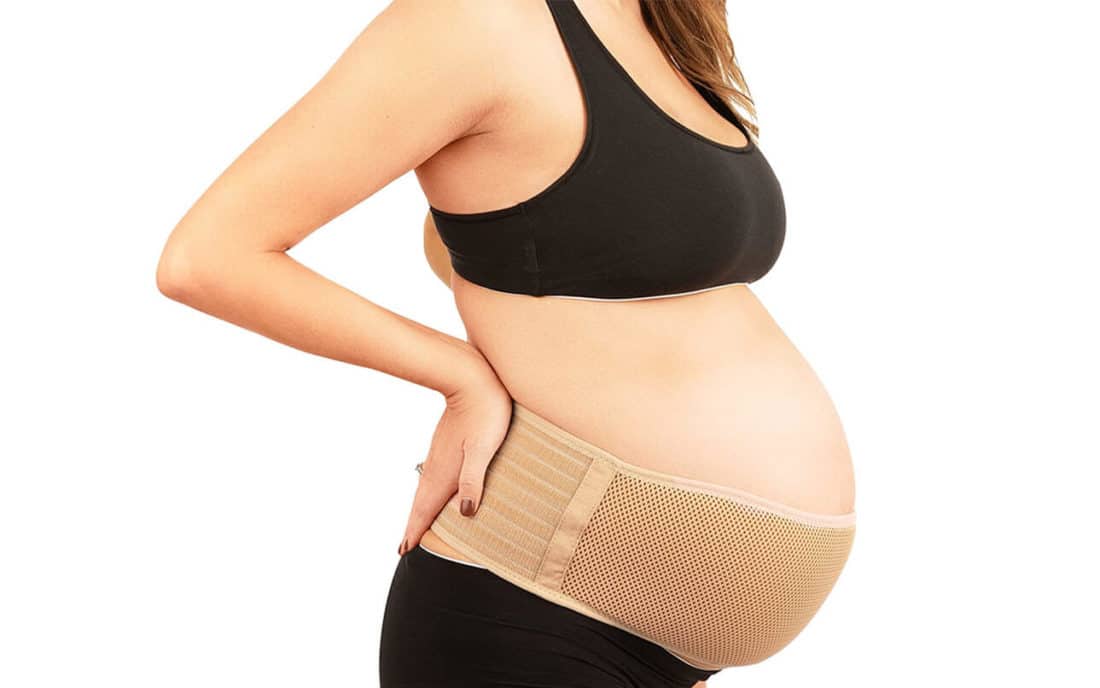
Yes, you may adore your growing baby bump, but you’re not happy with the rising pain that often follows it.
According to research, these intense shooting pains, known as round ligament pain, generally appear during week 14 of pregnancy, when your uterus grows and begins to extend out of the pelvis.
While round ligament discomfort is typical, many women feel it throughout their second and third trimesters, and words of support alone may not provide much relief. Pregnancy support bands and belts can help with this pain and support.
What’s A Maternity Belt?
Pregnancy belly support belts and bands, often known as pregnancy belts, wrap over your lower back and abdomen to softly cradle your bump while relieving strain on your back and pelvic.
These belly support belts are distinct from belly bands and pants extenders, intended to allow you to wear your non-maternity jeans for more extended periods while providing lesser support.
Pregnancy belts can help support the uterus and, if worn lower on the abdomen, can support pulling the baby out of the pelvis.
Women who are pregnant are more prone to have round ligament discomfort while changing postures, such as sitting up and walking or participating in physical exercise. Thus support bands can be beneficial.
According to experts, not only is this discomfort generally short-lived, but it helps to overcome itself in a few seconds or minutes, but wearing pregnancy belts may help relieve the symptoms.
Wearing A Maternity Belt
Women usually decide based on how and when to use a pregnancy support garment on the product instructions and how it feels on them.
But, belly belts or the tightest section of any clothes, below the belly bump and above the pubic bone and hipline, may be preferable.
While there is no scientific data to prove when women may use supportive maternity underwear safely, it is usually better to avoid them when:
- In hot, humid, or high-altitude settings.
- Working out or losing a great deal of energy.
- In places where there is a lack of ventilation.
- There are difficulties with the pregnancy.
- The mother is not feeling well.
Step-To-Step Process of Wearing A Maternity Belt
- First, consult with your doctor about utilizing a belly band. They are not appropriate for ladies who have hypertension or weak circulation.
- Then, based on your pre-pregnancy size, select the appropriate size. Many companies include sizing charts that match pant sizes to support you in selecting the best-fitting option.
- If you have a tube belly band, put it over your head and your stomach. Slide it down till it reaches the bottom of your pants.
- Place the most significant point of belly bands with velcro snaps beneath your stomach to support it and secure the velcro straps behind your back. Refer to the directions supplied with your band if you want to attach it in the front or on the sides.
- You’d want to feel some mild compression. An excessively tight belly band can induce indigestion, heartburn and influence your circulation and blood pressure.
- Wear your maternal support band for no more than 2 to 3 hours at a time. Excessive stretching might damage your lower muscles if you become overly reliant on them. Take a pause and let your body heal and prepare for childbirth.
- Belly bands should be used in combination with everyday activity to help you lose weight and gain power.
- If your maternity support band does not reduce discomfort or you are experiencing pain throughout regular activities, consult your doctor to treat any underlying problems. You could be referred to a physical therapist.
What You Should Know About Wearing a Belly Band
- To avoid overdependence, use a belly band or support garment for no more than two to three hours at a time.
- Transverse abdominal strengthening exercises should be done in collaboration with a belly band to strengthen the core muscles both during and after pregnancy.
- Before wearing any compression clothing, always check your doctor. Women who have poor circulation or high blood pressure should avoid wearing a belly band.
- Belly bands are just for temporary usage and are not a long-term solution. It is critical to treat the root cause of the problem. To address ongoing discomfort during and after pregnancy, a referral to physical therapy is advised.
Benefits

1.Pregnancy Pain Relief
Back and joint discomfort during pregnancy can be stressful, making it difficult to engage in daily tasks. Research published in the Spine Journal looked at the rate of back and pelvic discomfort during pregnancy. They discovered that 71% of women had low back pain, and 65% had pelvic girdle pain.
Wearing a belly band while pregnant may provide support to your lower back and baby bump during activities, resulting in less pain all in all.
Sacroiliac (SI) Joint Pain
SI joint discomfort is particularly common during pregnancy as a result of an increase in relaxin. This appropriately called hormone causes the hip joints to loosen and become less secure.
It’s a severe, often severe, ache in the lower back near the tailbone. Belly bands and braces that support this area assist in stabilizing the joint, which may help reduce discomfort during exercises.
Round Ligament Pain
During the second trimester, this symptom appears. It has been described as a dull ache to severe pain on the front of the hip and below the belly.
It is a brief but often painful discomfort caused by the added weight and strain on the ligaments that support the expanding uterus. Belly bands assist spread the baby’s weight across the back and abdomen, relieving stress on the round ligaments and relieving pain.
2. Comfort During Activities
You wouldn’t go to the gym or go on a run without your beloved sports bra, would you? Those who are on their feet a lot during pregnancy might consider their usual routine as a workout. A belly belt or band may help with everything from walking back and forth all around the workplace to catching meetings to having a physically demanding job like a cop or nurse.
Physical discomfort from the uterus and belly can be minimized by offering comfort with just a little compression. This can help you get through your workout and keep your mind off your pain to focus better at work.
3. Postpartum Healing
After giving delivery, do not remove your belly band. It can aid in postpartum recovery since the muscles and ligaments stretched following birth require time to repair. It might be tough to care for your infant if you are stressed or weak. Your belly band’s support may reduce your comfort.
4. Improves Your Posture
Your maternity belt will also assist you in maintaining good posture, notably during the third trimester when your lower back and spine are subjected to more significant strain. As the muscles that hold the spine in your core weaken, you are more likely to stretch your lower back. This might happen during your usual everyday activities, such as walking or sitting. On the other hand, your pregnant belly band will provide the essential support to stabilize your lower back and torso.
5. Hacks Of Your Outfit
Being pregnant is full of surprises and experiences. For instance, your favorite pair of cozy pants could fit one day and not the next. However, you do not have to panic and trash them. Your belly band can be used to fill the space between your shirt and jeans.
It will give you a stylish layered style while also providing you with the privacy of hiding your tummy. Instead of squeezing into their pants and suffering from the pain of button impressions, many ladies may cover their unbuttoned jeans and rest.
Tip
Not all pregnancy support belts have a belly strap. Some companies include a belly strap for further support. Maternity belts are available in a variety of sizes based on dress size. When paired with a pair of comfortable shoes and proper posture, a maternity belt can also help reduce back pain associated with pregnancy.
Warning
Wrap the maternity belt loosely over your body. The maternity belt should not limit your ability to walk or sit. The maternity belt should not be wrapped across the middle of your pregnant tummy.
Soft & Breathable Pregnancy Belly Support Belt

Final Words
It might be challenging to choose which maternity support items are best for each stage of pregnancy.
Belly bands and supportive undergarments often provide mild compression and support, such as maternity shirts, underwear, leggings, and tights.
Belly belts, maternity cradles, and postpartum wraps or girdles, on the other hand, are more rigid and provide more excellent support. Still, they are generally less stylish and challenging to cover.
While there are many fantastic maternity support items on the market, the majority do not have proven health benefits, and some may not be safe for all women. Before using any maternity support items, consult with a doctor or obstetrician.

